Come Rath Yatra, the iconic image of towering chariots and a swirling mass of devotees is a sight to behold. Not very far from Kolkata, such processions with chariots, some of them dating back to more than a couple of centuries, still take place amid much fanfare and interest.
Here are some glimpses into these well-known processions where the festival has become a community event, usually followed by the longstanding tradition of visiting the local rather mela to munch on freshly fried papads and buy wooden toys for children.
Rath Yatra in Mahesh

The present rath dates back to 1885
Quite a few centuries back, Dhurbananda Brahmachari began this famous chariot procession. Legend has it that Dhurbananda went to Puri in the 14th century as he wished to offer bhog to Lord Jagannath. But the temple authorities prevented him from doing so. A dejected Dhurbananda undertook a “fast unto death”. On the third day of his fast, Dhurbananda heard Lord Jagannath’s voice, advising him to head back to Bengal — to a place called Mahesh on the banks of the Hooghly. He came to Mahesh and established a Jagannath temple. The famous Rath Yatra of Mahesh started in 1397.
The present rath dates back to 1885 and was made by Martin Burn Co. Framed by iron, the chariot has nine pinnacles and towers that rise to a height of 50 feet and weighs 125 tons. It runs on 12 wheels, each with a diameter of four feet.
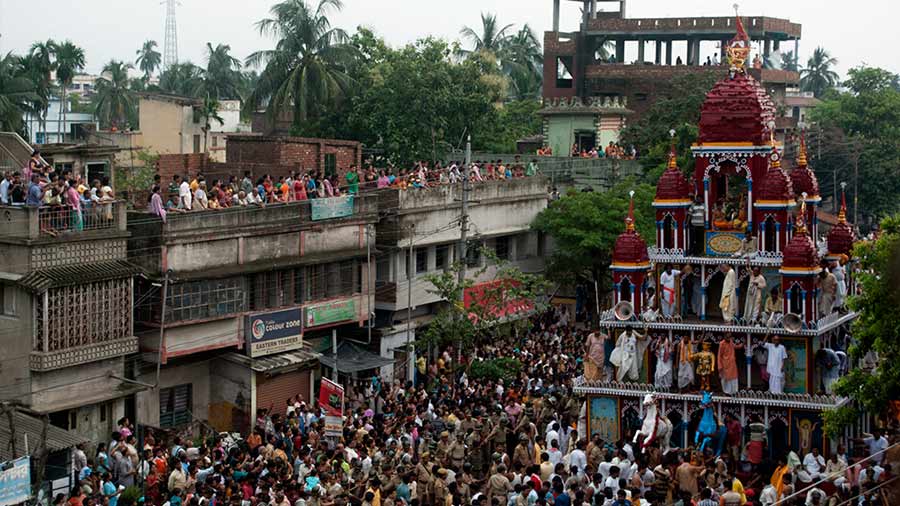
The chariot weighs 125 tons
Today, this gigantic rath is pulled through crowded streets under strict police supervision. The eight-day period between rath and ultorath is marked by a fair, complete with merry-go-rounds and circus shows.
Rath Yatra in Mahishadal
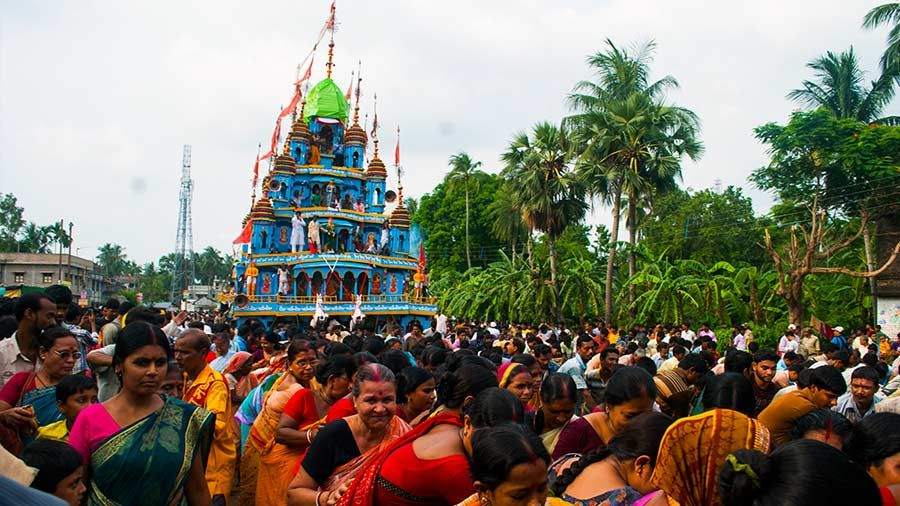
The Mahishadal rath rises to a height of almost 70 feet
Started by Rani Janaki Devi in 1776, this chariot procession in Mahishadal, East Medinipur, is a grand occasion. Probably the tallest rath in the state, the Mahishadal rath rises to a height of almost 70 feet. Though the same rath is still being used, its height has been reduced from 17 pinnacles to 13 pinnacles in 1860. The lower pinnacles have been replaced with colourful wooden statues. The gigantic chariot runs on 36 wheels.
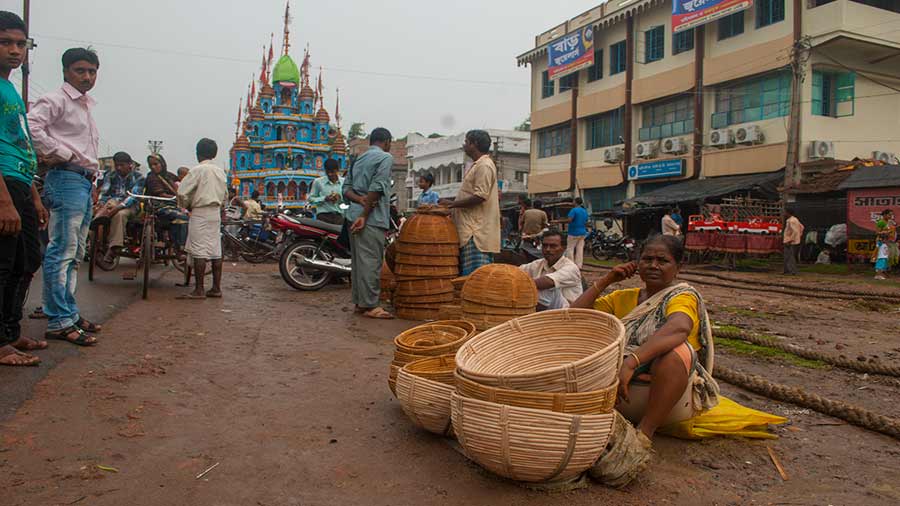
The rath is pulled through muddy and slushy grounds swarming with devotees
The local raja, belonging to the Garg family, accompanies the rath in a palanquin. Gunshots announce the start of the procession and continue through the course of the journey. The chariot is pulled by four thick ropes, with one of them being reserved for women. The chariot pullers follow the instruction of a volunteer who stands high up on the chariot with red and green flags. The rath is pulled through muddy and slushy grounds swarming with devotees.
Rath Yatra in Guptipara
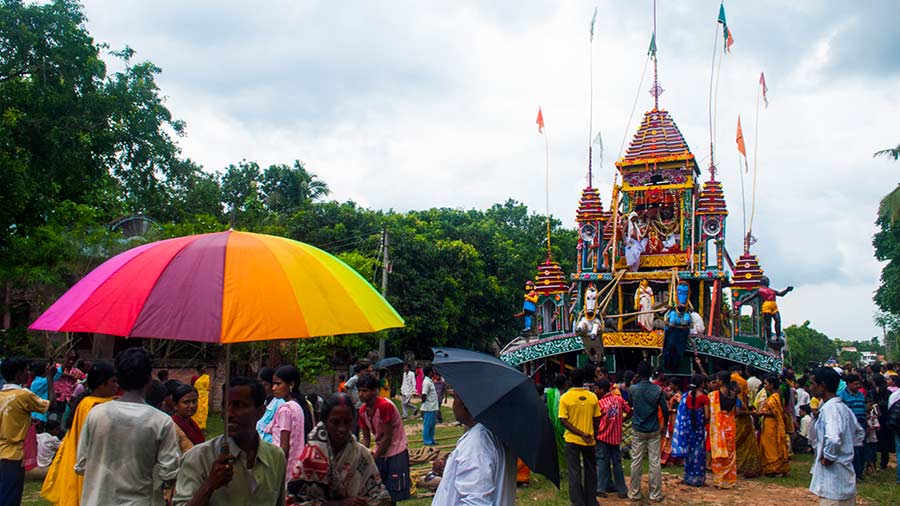
The rath at Guptipara
Though Guptipara is known for Bengal’s first Sarbojanin Durga Puja (some say it was Jagadhatri Puja), Rath Yatra is the main festival of this traditional Vaishnava centre. The procession starts from the Brindabanchandra temple, which is part of an ASI-protected site. The gigantic nine-pinnacled rath is decorated with colourful festoons and banners; it is also fitted with wooden horses and several wooden statues. The multi-wheeled rath is pulled by four thick ropes. A rope at the back serves as a brake.
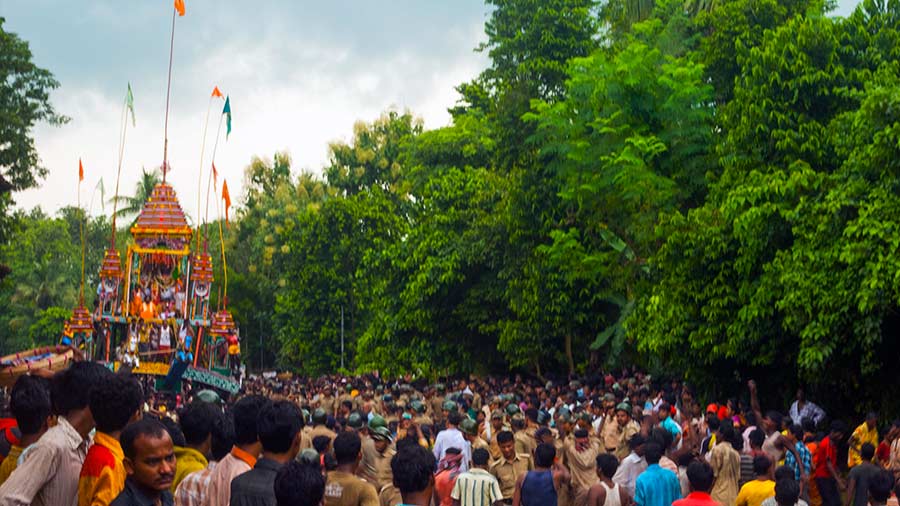
The gigantic rath is decorated with colourful festoons and banners
Guptipara is the birthplace of the famous folk singer Bhola Moira. The presence of folk singers is an added attraction of the Guptipara rather mela. A day before ulto rath, a ritual called bhandarloot is held where the devotees literally fight for the bhog placed inside the temple complex.
Rath Yatra in Chandernagore
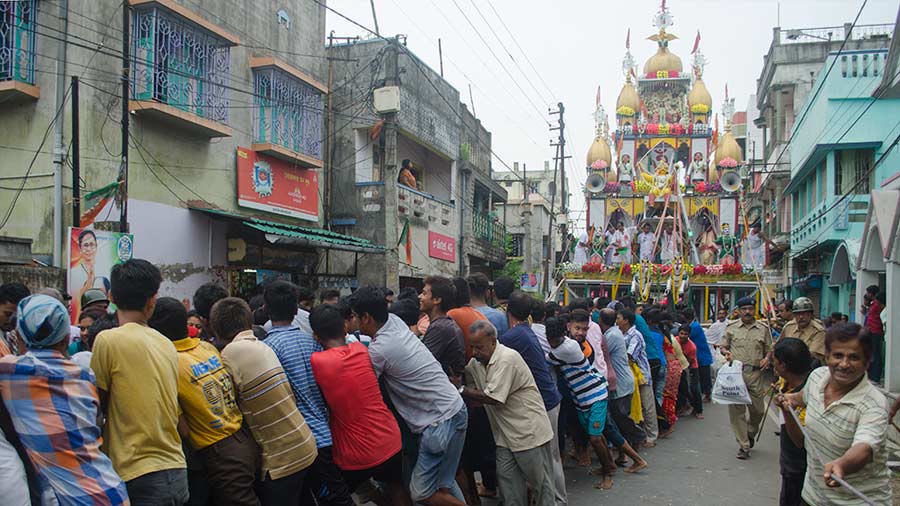
Some stretches are so narrow that the chariot barely fits in
Chandernagore is known more for its French connection than its Rath Yatra. But the town boasts of a chariot procession which has been going on for the last two centuries!
Known as Jodu Ghosher Rath, the chariot derives its name from Jadavendu Ghosh, a prominent rice trader of the region. According to historical records Jadavendu Ghosh, popularly known as Jodu Ghosh, was on a pilgrimage to Puri in 1763. He fell ill during the pilgrimage and was forced to return. On his return he decided to build a temple for Jagannath, Balram and Subhadra. The Rath Yatra probably started in 1774 (another source say 1798) on a rath made out of neem wood. The wooden rath continued its journey till 1962 when it was replaced with a new rath.
The new chariot has a metal frame, built by Braithwaite & Co. Ltd., and has been modelled after its predecessor. The rath runs on 14 metal wheels that have been fitted with a unique braking system. After the introduction of the new rath, the old chariot was immersed in the Hooghly. A portion of the wooden ornamentation is preserved in the Chandernagore museum.
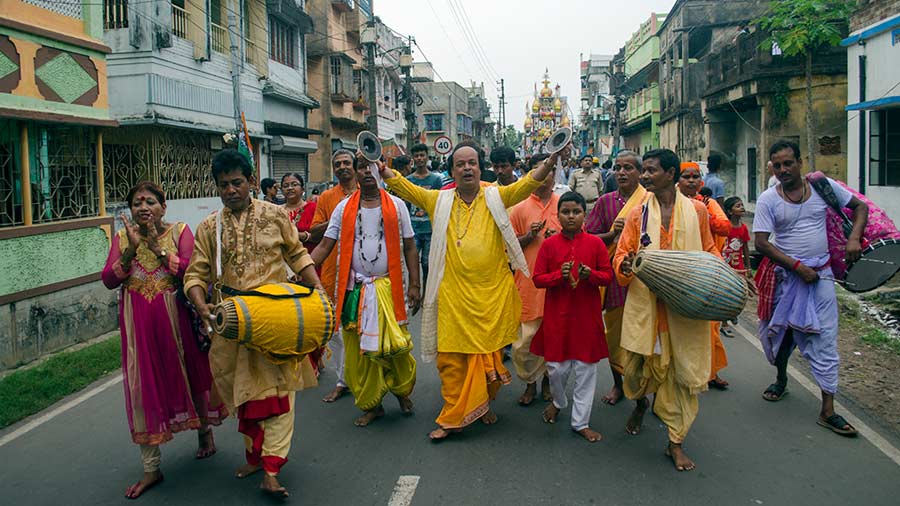
The procession in front of the rath
Today, the rath runs between Lakshmiganj Temple and the Taldanga crossing. It follows a narrow stretch of GT Road. Some stretches are so narrow that the chariot barely fits in. The rath along with its two ropes is cordoned off by police and volunteers to keep the crowd in control.
A volunteer on the chariot carries red and green flags. He is accompanied by another with similar coloured LED lights. The flags and the lights instruct the chariot pullers when to stop and start. Verbal instructions are also issued with a megaphone. The rath is accompanied by a group of kirtan singers and a band party.
